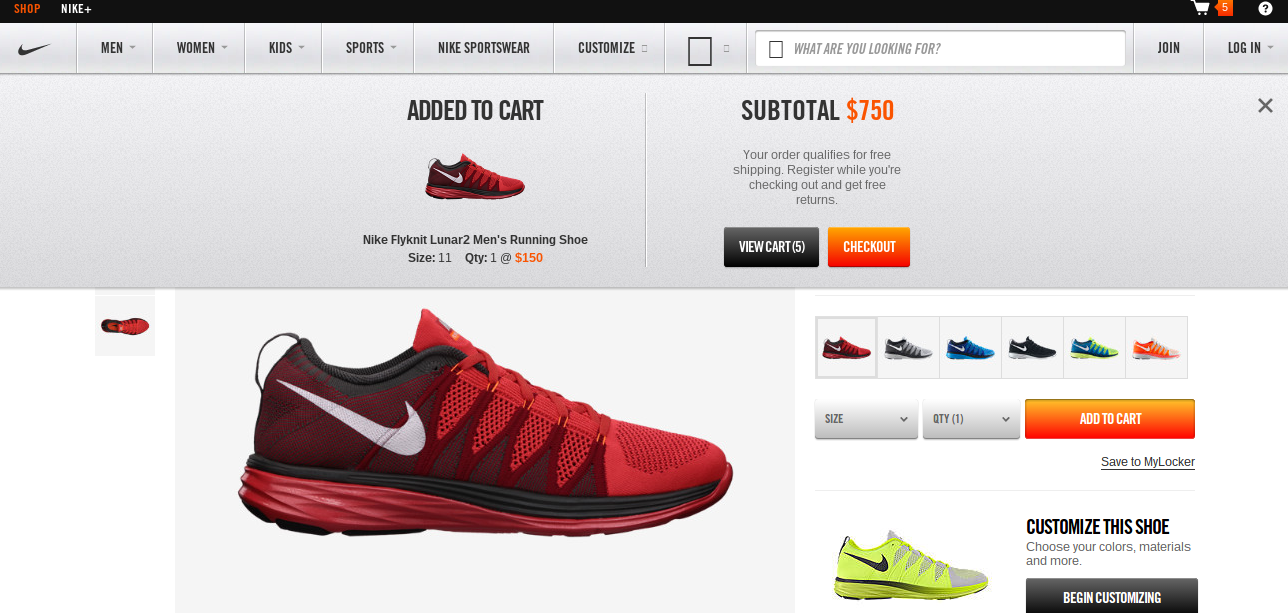Top Reasons for Cart Abandonment #5: Lack of Perpetual and Persistent Carts
First, let’s define the two:
Perpetual Cart: A perpetual cart displays what is in a user’s cart as they navigate around the site (as opposed to only showing what is in a user’s cart when they go to the actual cart page). See the Nike example below.
Persistent Cart: A persistent shopping cart remembers the items a customer added to their cart on their next visit with the use of cookies.
First, let’s talk about perpetual carts. Losing people at checkout is one issue that we’ve discussed, but losing people before they get to the “register” is another hazard in the online marketplace.
For many of us, spotting the finish line is motivating in and of itself. If you are a runner, you know exactly what I mean. Both monitoring how you feel during a run and how close you are to the finish motivates you to keep going. The same goes for many shoppers in the midst of a purchase.
Perpetual carts allow shoppers to see exactly what their total is alongside any fees (such as shipping or tax). Most importantly, perpetual carts provide buyers with a “CHECKOUT NOW” button that allows them to commit when they feel ready. Speaking of running, let’s take a look at Nike.com.

When I added these shoes to my cart, I was notified of their retail price and shipment costs (in this case, free – awesome). Also, I have a nice big calls to action that will take me directly to either the cart or checkout.
Perpetual carts:
1. Allow shoppers to see the final costs.
2. Provide a call to action button (“Checkout Now”). 3. Allow shoppers to commit when they are ready.
Persistent Carts
Comparison shopping and consideration periods are a normal part of the sales cycle. Hence, shop owners need to be thinking about how they can support buyers during this period. Setting up a persistent cart, so that when a visitor comes back, even after some time, the contents they added in the past still show up is huge in reminding and encouraging users to close the sale.
Persistent carts leverage cookies to remember what a particular user added in the past. It’s important to note that using a persistent cart does not expose any sensitive account information and customers will still be required to log in in some way (either with an account or through guest checkout) before completing their purchase. We typically recommend setting persistent carts to a minimum of 60 days.
Welcome Programs or Cart Abandonment Email Reminders
Every eCommerce store should have a welcome program in place. Assisting customers in getting back to the site during their consideration cycle can drastically increase conversions (we have seen statistics along the lines of a 300% increased conversion rate after customers receive a cart abandonment reminder). This is also precisely why remarketing works, but we will leave that for another discussion. Cart abandonment emails can be automatically set up to send to customers after they have abandoned their cart for a certain amount of time. We have worked with a few clients who have even offered discounts in their reminder emails and had great success. Supporting customers who are already interested in your product is a no-brainer that takes some brains to remember.
